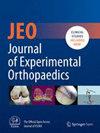To assess coracoid process morphology in an Asian population using three-dimensional (3D) computed tomography (CT) reconstruction and provide reference values for surgical treatment.
Data on demographic and shoulder CT characteristics were collected from 142 patients for 3D-CT-based scapular reconstruction. Ten coracoid morphological indicators and the glenoid width were measured. The morphology of the superior pillar and its undersurface were classified into common shapes. Statistical analyses included intraclass correlation coefficient (ICC) analysis, Cohen's κ value, independent samples t test, Welch's t test, Mann–Whitney U test, Kruskal–Wallis test, Spearman and Pearson correlations, receiver operating characteristic (ROC) curves and area under the curve (AUC) values. Relationships among the measured indicators, patient demographics (i.e., sex, age, height and weight) and superior pillar morphology were ascertained.
The intraobserver and interobserver ICC values were 0.924–0.980 and 0.906–0.962, respectively. For intraobserver and interobserver agreement, Cohen's κ values were 0.927–0.950 and 0.901–0.937, respectively. Significant sex differences in coracoid measurements were noted. Correlations were observed between the coracoid indicators and glenoid width, sex, height and weight (p < 0.05). ROC curve analysis identified height as a significant predictor of safe distance, with cutoff values of 160.5 and 170.5 cm (AUC = 0.82 and 0.83) for women and men, respectively. The superior pillar morphologies included violin (24.65%), long rod (21.13%), short rod (33.80%), trapezoidal (11.97%) and wedge (8.45%) shapes, with the undersurfaces categorized as straight (16.20%), arched (76.76%) and hooked (7.04%), with significant differences in pillar widths among the different morphological types (p < 0.05).
Coracoid morphology is crucial in the preoperative planning of given shoulder surgeries, with height and sex serving as key predictors of coracoid graft length. Consideration of variations in the superior pillar shape and undersurface of the coracoid could minimize surgical complications associated with special shoulder surgery.
Level IV case series with no comparison.



